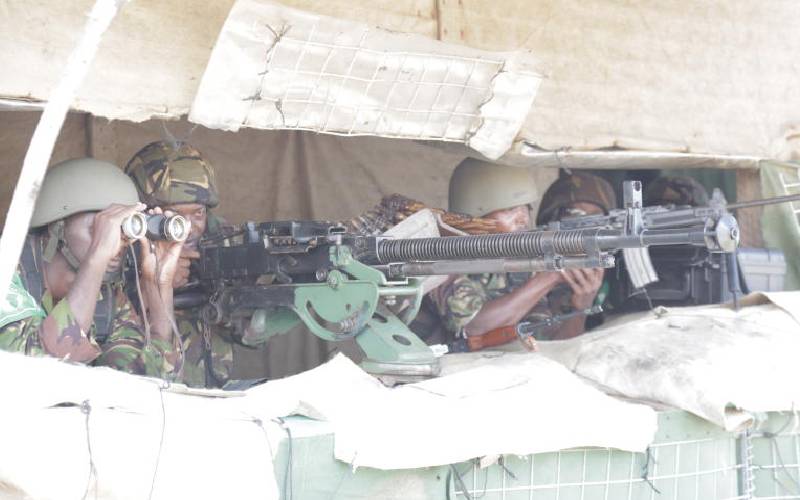×
The Standard e-Paper
Join Thousands Daily

The Kenya Defence Forces at the port of Kismayo. [Joshua Agwanda, Standard]
Tucked inside a trench on a hill overlooking the breathtaking beaches of Kismayo, a five-man Kenya Defence Forces (KDF) combat unit keeps steady aim.